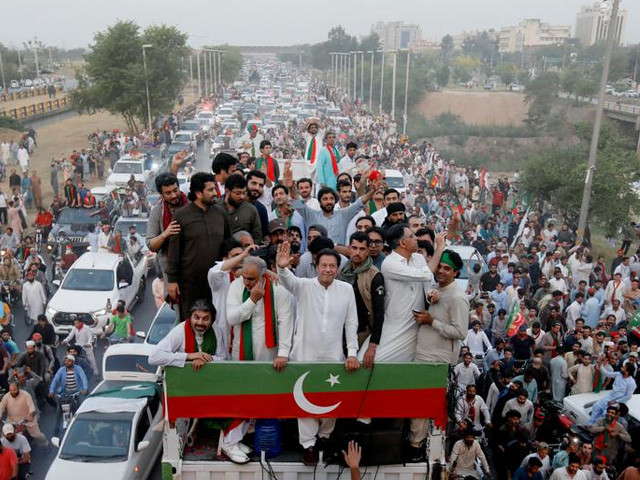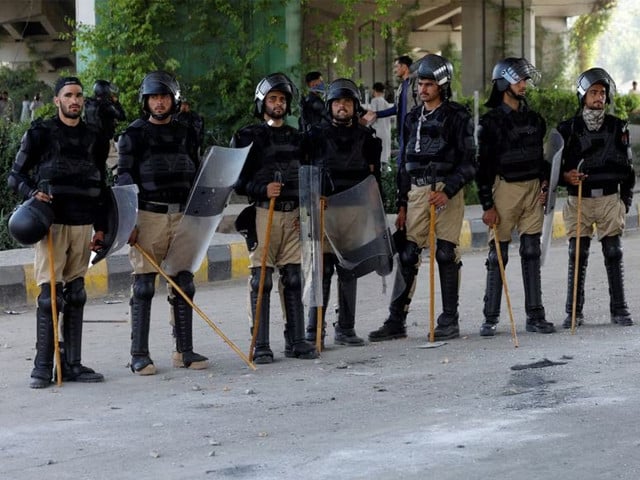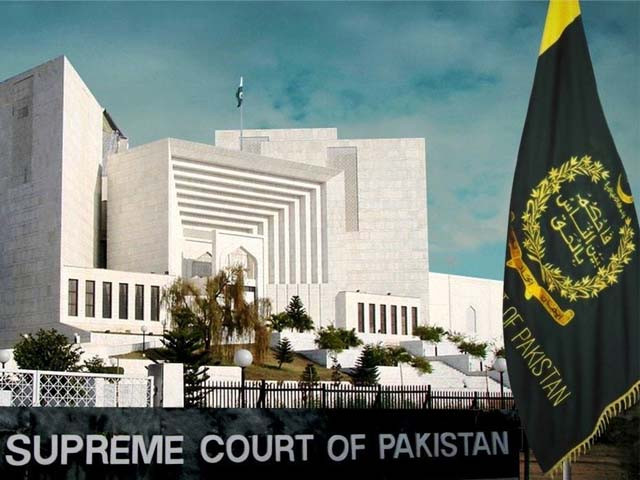
Pakistan and its famous ‘long march’
The democratic process in the country is once again advancing to a halt as ousted premier Imran Khan leads his long march from Lahore towards Islamabad. If you are a resident of Islamabad, the long march is an axiom of your childhood like a Ronald Dahl novel. After the sitting government tarnished the democratic process of holding a protest, it is important be a little nostalgic and take a look at how we as a nation have become so indulged in this oblivion of long marches and protests.
In 1968, the National Student Federation led a countrywide protest against then president General Ayub Khan as he celebrated his “Decade of Development”. As the protest continued, the police opened fire on a student rally that killed three students in Rawalpindi. This tyranny led to more protests and eventually, on March 25, 1969, General Ayub transferred power to General Yahya Khan, who, to combat the deteriorating situation, immediately imposed Martial Law, starting a dark time in the history of our democracy.
The first protest, however, to be termed as a “march”, took place on July 4, 1980, when the Shia community marched against then president General Zia-ul Haq due to the enforcement of the Zakat and Ushr Ordinance. From then onwards until now, Pakistan has faced numerous long marches; some have blackened the history of the country and some have waved the flag of change.
In 1992, Benazir Bhutto decided to march against then premier Nawaz Sharif over the allegations of electoral rigging and corruption. This long march was joined by other political leaders and parties, which included the Jamaat-e-Islami. Thousands of supporters of Benazir showered her with rose petals as she headed for the capital. Under pressure of it all, the then president, Ghulam Ishaq Khan, decided to dissolve the National Assembly, which was, however, reinstated by the Supreme Court orders on May 26, 1993. Benazir, after the decision of the Supreme Court, marched towards the federal capital once again. However, this time, just like present times, the city was sealed by the ruling party of Pakistan Muslim League-Nawaz (PML-N).
Weeks of political turmoil followed, with forces clashing with citizens. And as these clashes continued, the then Army Chief, General Abdul Waheed Kakar, persuaded president Ishaq and prime minister Nawaz to resign. The turmoil ended with Benazir coming out of all of this with a victory.
The pain of citizens, the obstruction of Constitution and the heinous acts of the government were forgotten. The norm was set: the long march had the power to overthrow the government.
Another long march that changed the course of Pakistan’s democracy was for the restoration of the judiciary in 2007, led by Justice Iftikhar Chaudhry and his entourage of lawyers. Termed as the “Lawyers Movement”, it began after Justice Iftikhar was removed from office. The removal was prompted by the chief justice’s decision to challenge the legality of Musharraf’s dual role as president and Army Chief. On March 9, 2007, then president Musharraf suspended Justice Iftikhar as chief justice, declaring that the latter had misused his office and authority. Pakistan’s legal community widely held Musharraf’s decision as an attempt to curtail the Supreme Court’s increasing independence under the chief justice’s leadership, and so the community began organised and nonviolent protests.
These rallies faced serious repressions from the government, with forces beating up the peaceful protestors. Despite all brutalities, the lawyers remained nonviolent, and on July 20, 2007, Musharraf caved to the pressure by reinstating Chief Justice Chaudhry. However, this turned out to be only temporary as Musharraf reverted to repressing the judiciary a few months later and simultaneously declared a state of emergency in Pakistan. The Constitution was suspended and a Provisional Constitutional Order was enforced.
As the lawyers’ movement began to resist Musharraf’s declaration of emergency, in a brave and uncommon act of defiance, approximately 97 senior judges of Pakistan refused to accept the emergency rule. All of these judges were immediately fired and detained, which included Justice Chaudhry. Despite the arrests, lawyers across the country defied Musharraf’s suspension of the Constitution in solidarity, and civilians joined forces with the lawyers. This combination of civilians and lawyers increased the pressure on Musharraf, who resigned in November 2007. Democracy had won and the flag once again signalled the march of change.
In 2013, Dr Tahirul Qadri started his “million man march” from Lahore to Islamabad. As the protestors reached the capital, the city once again came to a standstill. Soon enough, an agreement was reached between the government and Qadri, wherein the government agreed to dissolve the National Assembly before its term end in mid-March, within 90 days until the next elections were to be held, according to the “Islamabad Long March Declaration”.
The march that exudes distinction from all others remains to be Pakistan Tehreek-e-Insaf’s (PTI) 126-day sit-in at the capital’s D-Chowk, where it had demanded the resignation of then prime minister Nawaz and an audit of the 2013 General Elections. Imran, at that time, was also backed by Dr Qadri and his supporters. The “dharna” was joined by supporters from all over the country, and the capital watched as days of non-stop protests passed by. Imran called off the sit-in in the wake of the APS Peshawar terrorist attack on December 17th.
Fast forward to 2021, Tehreek-e-Labaik Pakistan (TLP) launched its “Tahafuz Namoos-i-Risalat March” from Rawalpindi’s Liaquat Bagh to Islamabad’s Faizabad. As they demanded the government to cut diplomatic ties with France, Liaquat Bagh turned into a battleground as forces clashed with TLP workers. The sit-in continued at Faizabad, creating havoc in the capital. This pressured the government to accept TLP’s demands and so, on November 16 2021, TLP announced the conclusion of its sit-in.
February 2022 saw the long march wherein the Chairman of Pakistan Peoples Party (PPP), Bilawal Bhutto-Zardari announced the “Awami March”. The march took place from Karachi and culminated in Islamabad’s D-Chowk in a peaceful manner.
The last long march to halt the capital was in May 2022, led by PTI Chairman Imran. Just like most of its predecessors, this march was met with tear gas and containers. As Imran marched from Peshawar to Islamabad, with convoys coming from all around Punjab, the sheer intensity of violence against protestors kept increasing. The Supreme Court, observing the situation, announced an order directing the government to remove all obstacles, providing PTI space in H9 to hold its protest. As both PTI and the ruling government ignored the dicta of the court, the situation began to worsen with every minute. Imran reached Islamabad in the early hours and left announcing a six-day ultimatum for the government.
Five months later, here we are yet again, with containers ready for placement and police equipped to deter the protestors, and the capital prepares for another “long march”. At the first glance, it seems that the march’s slow progress is a tactic of building pressure on the sitting government in an attempt to set aside the judgement of the Election Commission of Pakistan. However, these tactics grapple with the practical dimensions of successful negotiations. As a result, predictability blows the wind towards the same norm as those of preceding marches, with the sitting government, following its old tactics, expected to use force to deter the protestors. The situation, at its standpoint in time, indicates towards a “power show”, but its success seems largely dependent on the pressure built behind “closed doors”.
So, as we wait for the march to reach its destination, the question to be pondered upon is: why is the right of freedom of expression hindered by the need of force, especially considering that the same right is protected by our Constitution? And has a long march become a norm of our political society with a need for proper governance?




COMMENTS (465)
Comments are moderated and generally will be posted if they are on-topic and not abusive.
For more information, please see our Comments FAQ